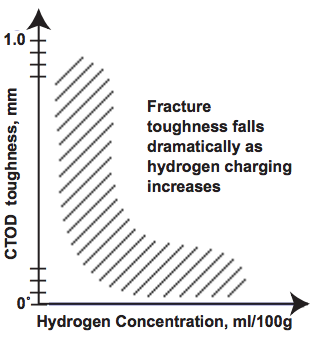The number of FFS assessments carried out by inspection engineers is expected to increase in the future, as operators “sweat” their ageing process equipment. The parameters required for assessments can be quite complex and interdependent. Therefore, a multidisciplinary peer review (involving stress analysts, NDE experts and materials engineers) is often necessary before acting on the findings of the even the most regular FFS assessment. Operators and inspection engineers using FFS assessments would do well to learn from previous failures.
Amine Absorber Column Failure
On 23 July 1984, the Union Oil refinery near Lemont, Illinois, suffered an explosion and a fire. Seventeen people working at the refinery were killed and the damage was estimated to be over $100 million. The explosion was caused by the ignition of a propane and butane cloud that had leaked from a ruptured amine-absorber vessel.
Prior to the explosion an operator at the column noticed gas escaping from a horizontal crack near the bottom of the vessel. The crack grew and he initiated evacuation of the area. As the company fire fighters arrived, the column cracked further and a large amount of gas was released. The gas ignited and the explosion sent the upper part of the tower into the air, landing over a mile away, Fig. 1.

The Cause of Failure
The column was commissioned in 1970 and the shell was of 1" (25mm) thick ASTM A516 Grade 70 carbon steel with full penetration submerged arc welds (SAW), in the as-welded (non-PWHT) condition. The vessel was designed and built to ASME Section VIII Division 1. Its purpose was to strip H2S from the propane/butane gas mixture in a counter-current mono-ethanolamine (MEA) flow. The operating conditions were 1.4MPa (14bar) (203 psi) internal pressure at 38°C (100°F).
The investigation into the failure found that the tower fractured at the circumferential weld between a replacement course and the lowest course, Fig. 2. Four large cracks in the heat affected zone (HAZ) had been present prior to the explosion, originating at the inner surface of the tower and extending almost through the wall thickness.

Microhardnesses measurements in the HAZ near the surface pointed to the cracks initiating by hydrogen cracking and then progressing by hydrogen-induced stepwise cracking (HISC). Tests according to a NACE standard procedure confirmed that the material was susceptible to HISC.
Surprisingly, impact toughness tests of the replacement course material and the weld between this course and the next one showed the weld metal and HAZ to have superior notch toughness to the base material. However, fracture toughness tests on the HAZ measuring crack tip opening displacement (CTOD) on hydrogen charged specimens revealed much reduced CTOD values at 38°C. The effect of hydrogen on CTOD is illustrated in Fig. 3.

















Comments and Discussion
There are no comments yet.
Add a Comment
Please log in or register to participate in comments and discussions.